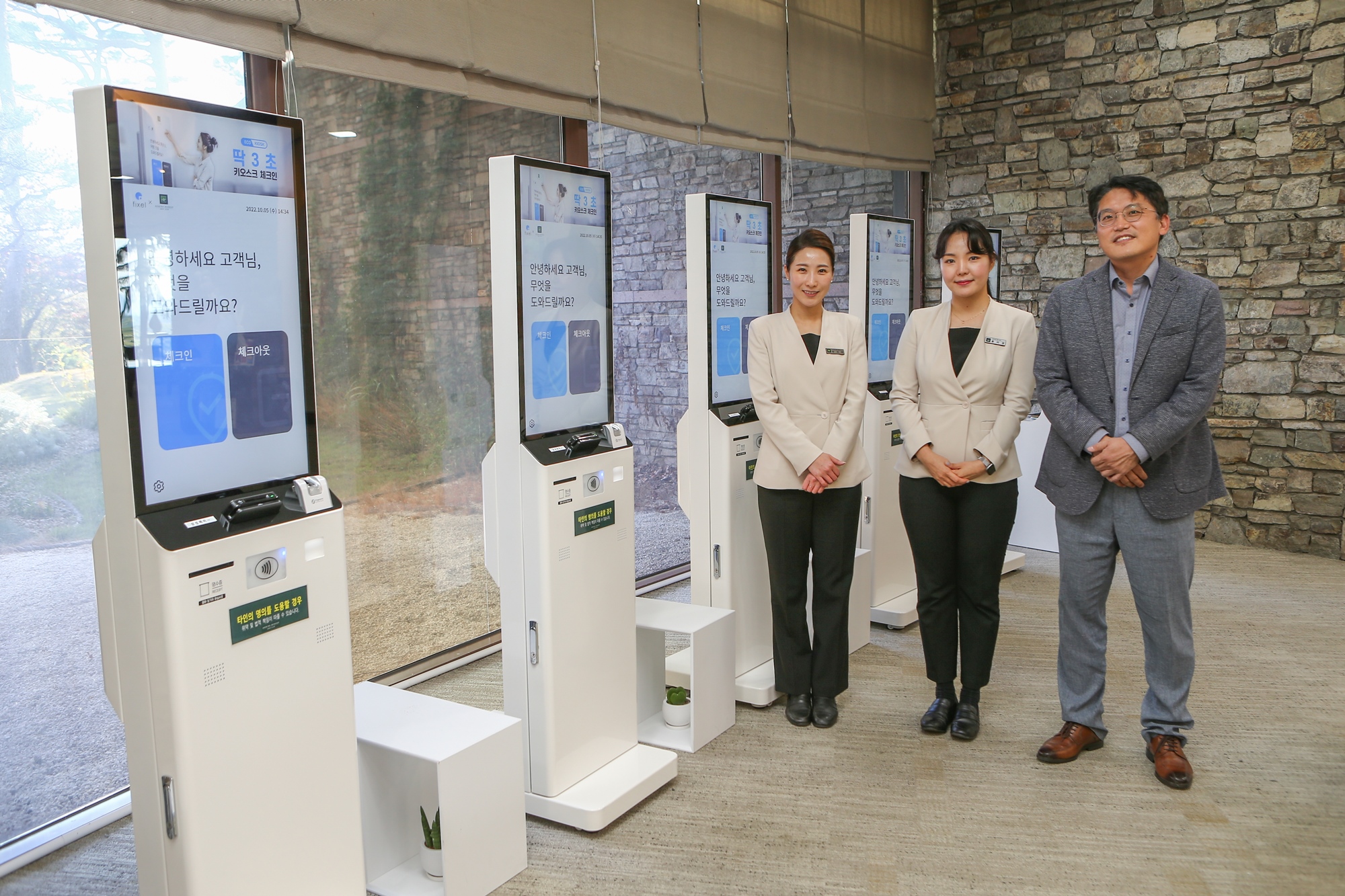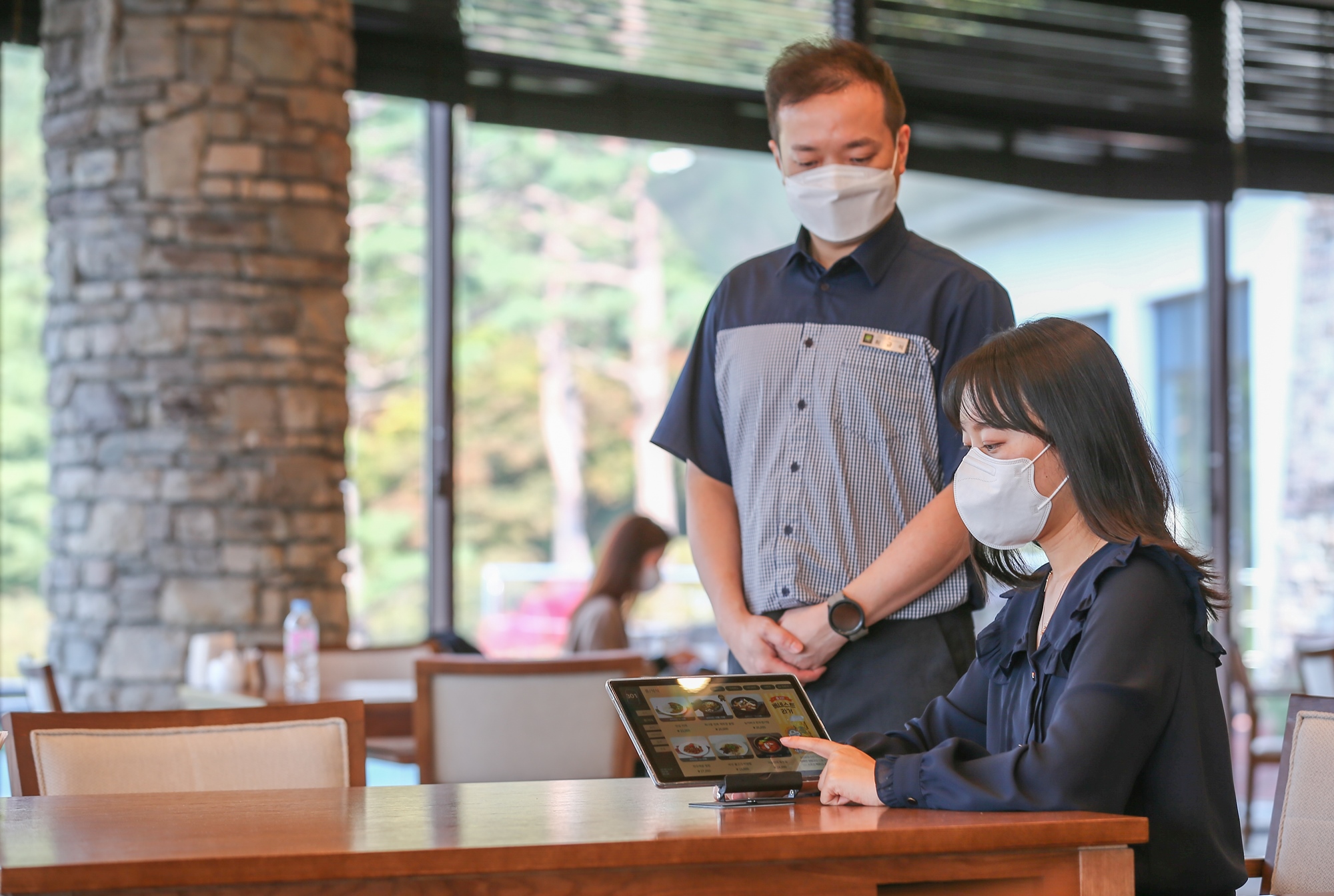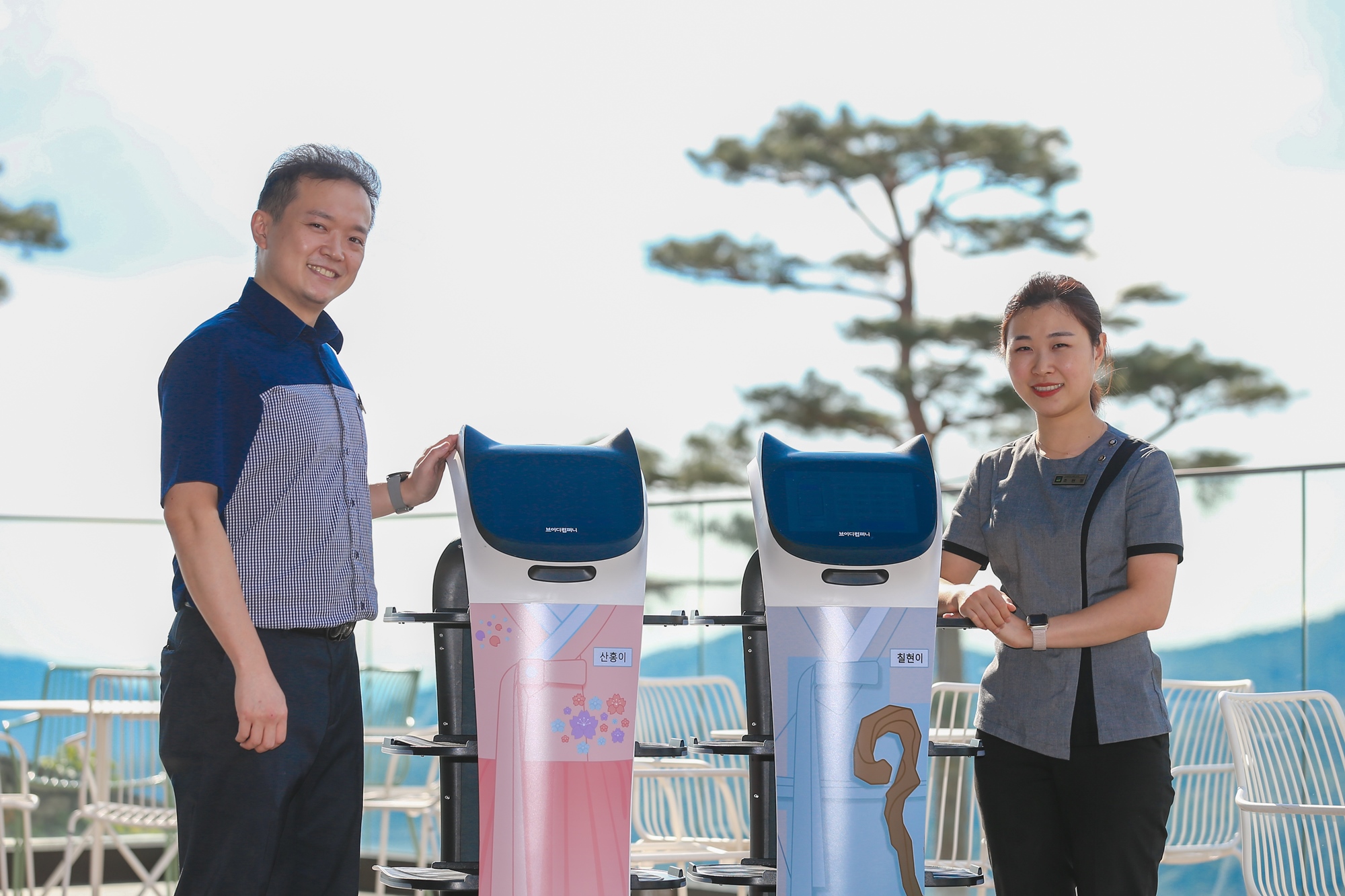Autumn with its blue skies, cool breezes, green grass, and brightly colored leaves is a great time to play a round of golf. The popularity of this outdoor sport is enjoying a resurgence in the aftermath of the pandemic, as people are keen to engage in physical activity in small groups surrounded by a beautiful setting. It is proving particularly popular with members of Generation MZ (the cohort that includes both Millennials and Generation Z). This sense of renewal and revival is timely, as golf is being transformed by the smart revolution, just like many other sectors.
Digital transformation with a capital Tee
Golf clubs around the world are looking for ways to innovate and move into the 21st century with smart technology and updated services. The six courses managed by Samsung C&T Resort Group are showing themselves to be at the forefront of this change.
Upon arrival at Anseong Benest Country Club’s golf course, golfers can use the new automated kiosks to check in and pay their rounding fees.
Visitors to Anseong Benest Country Club’s golf course, located south of Seoul, will see five automated terminals left of the entrance. These terminals are unmanned service kiosks, where golfers can check in and out and pay their green fees.
Explaining this innovation, Kim Dae-sik, in charge of Anseong Operations, says, “Here at Anseong Benest, it is a golf course that has both a membership base and is open to the public, we get a lot of young golfers here who can accept and understand changes easily.” “Since Anseong Benest is a place where many of the young generation who are quick to adapt to new technologies go, it is also the first place to get the new changes that the golf business team tries,” he added.
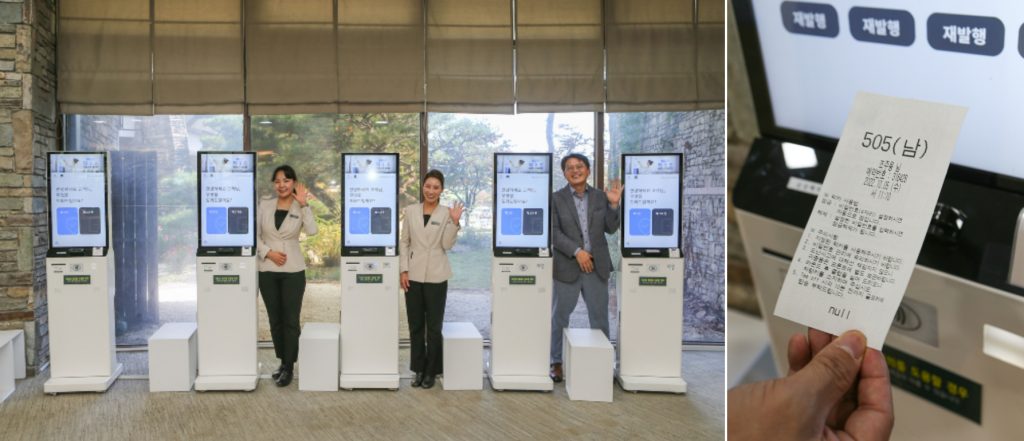
Golf course staff are on hand to provide assistance in case of confusion, and to monitor the system for possible improvements.
After trialing a mobile app version of checking in last year, the club found that operating physical kiosks at the club entrance was a much better way that was more easily adopted by golfers. When the kiosks were first introduced in August this year, the target usage rate was 60 percent. By the end of August, that had risen to 85 percent because of the high rate of adoption. In the first month, constant monitoring by front desk staff, who are on hand to assist golfers with the kiosks, led to upgrades and improvements in the user interface. As a result, by September the utilization rate had grown to 97 percent.
This has improved the speed of customer service to golfers and made life easier for Anseong Benest workers, who used to have to come to work early to prepare the front desk. The digital transformation of golf club check-in and payment brought about increased employee satisfaction and has given them energy to improve customer service further.
I, Robot Waiter
Automated kiosks are only the first form of digital transformation that golfers will see when visiting the Anseong Benest Country Club. A second form can be seen in the second-floor restaurant in the form of tablet ordering and robot servers.
Diners can now order by tablet and see their food arrive on robot servers.
In the past, orders were given to human waiters who took them to the kitchen. Now ordering is done by electronic tablet, reducing the number of mistakes and resultant customer complaints. Kim Dae-sik explains, “Time can be saved by the orders going straight through to the cooks in the kitchen.” Since the new ordering system was adopted in early 2021, it has raised efficiency while also solving the problem of a lack of manpower at peak times.
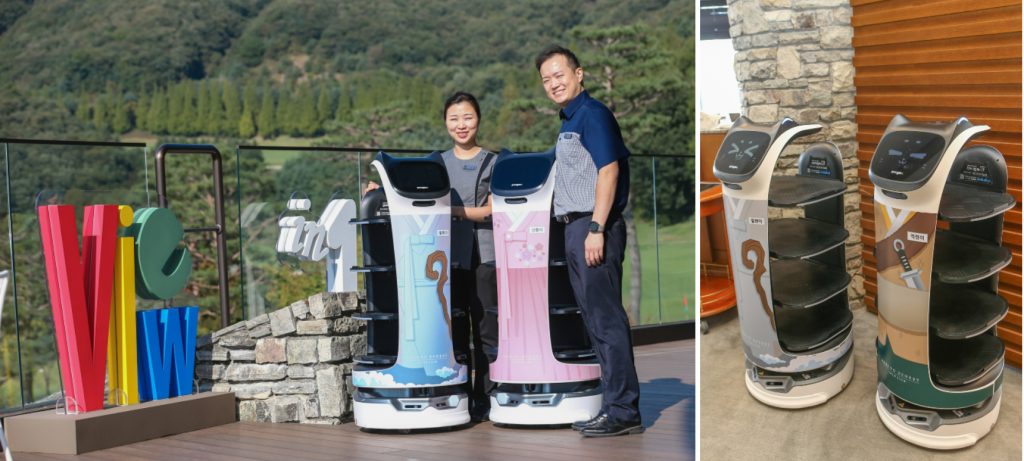
Then in April this year three robots named Chilhyeon, Kkeokjeongi, and Sanhongi were introduced. These robots painted in Hanbok themes deliver food from the kitchen to the tables. It has been deemed so efficient that two further robots are already on order.
Kim Dae-sik explained the robot names were the result of a contest among employees. Chilhyeon is named after a nearby mountain. Kkeokjeongi takes its name from the 16th century peasant rebellion leader who lived in the Anseong area. And Sanhongi got its moniker from the fact that many azalea rhododendrons, known at Yeonsanhong in Korean, grow on the golf course. “We are thinking of calling our next two Geumgwang and Samheung-I after local areas,” explained Kim Dae-sik.
The restaurant’s human workers accompany the robot to the table and place the food from the robot’s tray onto the table in front of the diners. While diners may be comfortable seeing robots move food across the floor, they are still more used to seeing food placed in front of them by a human.
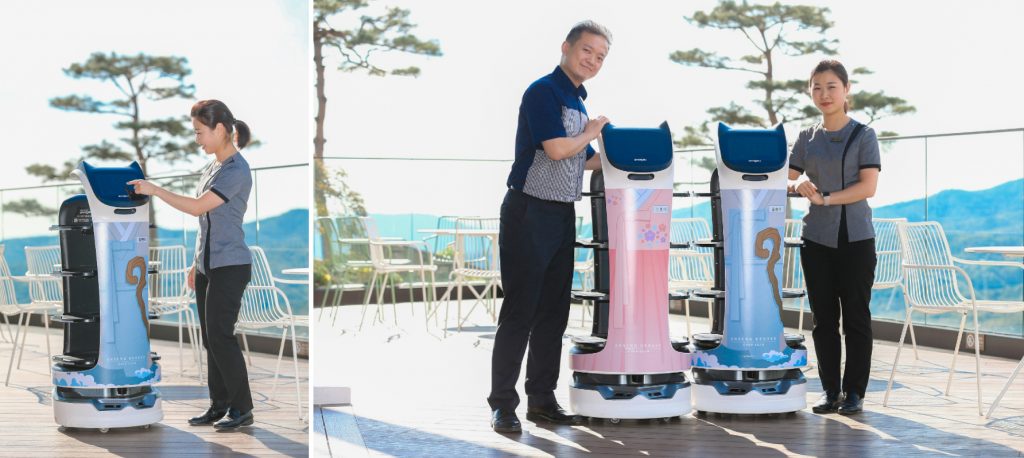
Human waiters work together with robots to bring food to the diners.
At the moment the robots’ sphere of activity is limited to the restaurant’s open dining areas, but there are discussions to expand that to private dining rooms.
As Korea’s 500 golf clubs compete to attract the new generation of young golfers, they are looking for ways to differentiate themselves in terms of service quality and efficiency. A golf club’s smart digital transformation could be key to getting ahead of the competition. More information can be found at the Golf Samsung website.




